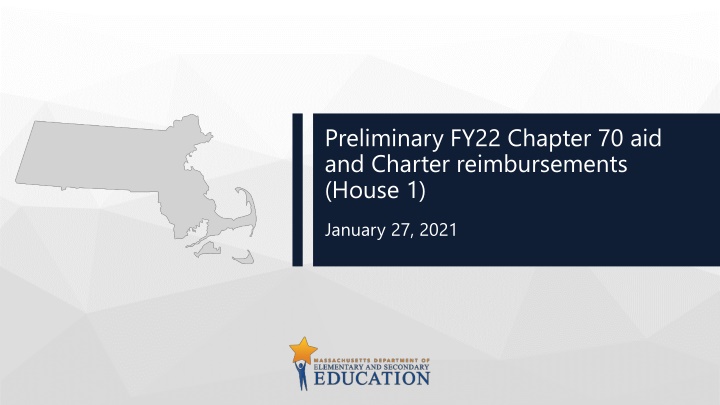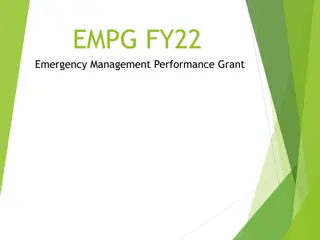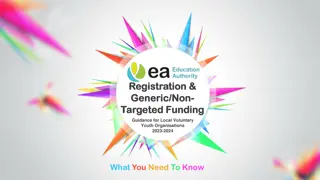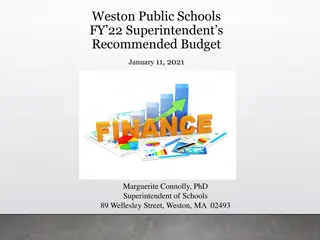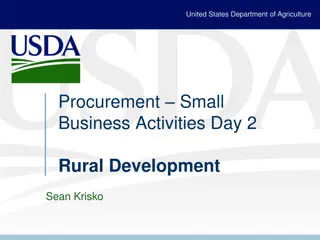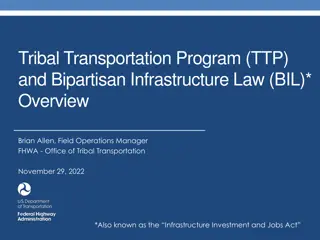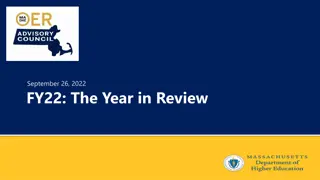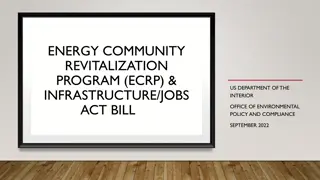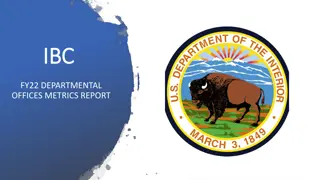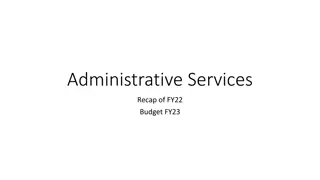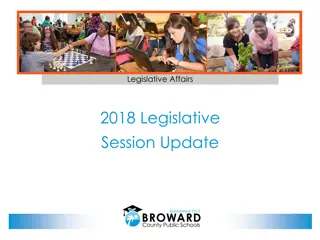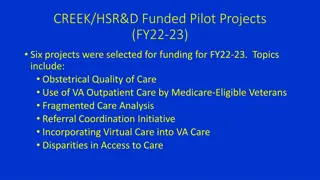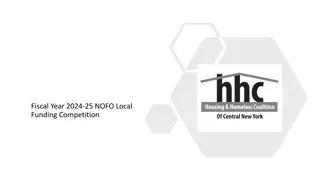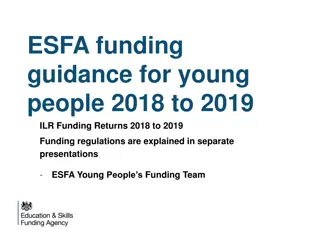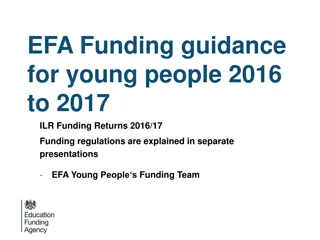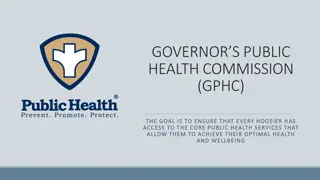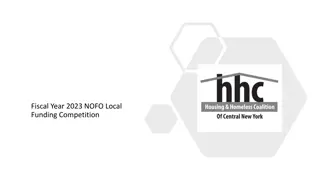FY22 House 1 Chapter 70 Funding Overview
FY22 House 1 Chapter 70 funding proposal implements the Student Opportunity Act, with increased allocations in key areas and adjustments to low-income student counts and special education enrollment. Targeted rate increases, inflation adjustments, and foundation budget enhancements are detailed.
Download Presentation

Please find below an Image/Link to download the presentation.
The content on the website is provided AS IS for your information and personal use only. It may not be sold, licensed, or shared on other websites without obtaining consent from the author.If you encounter any issues during the download, it is possible that the publisher has removed the file from their server.
You are allowed to download the files provided on this website for personal or commercial use, subject to the condition that they are used lawfully. All files are the property of their respective owners.
The content on the website is provided AS IS for your information and personal use only. It may not be sold, licensed, or shared on other websites without obtaining consent from the author.
E N D
Presentation Transcript
Preliminary FY22 Chapter 70 aid and Charter reimbursements (House 1) January 27, 2021
FY22 House 1 proposed Chapter 70 funding 01
FY22 House 1 Chapter 70 implements the first year of the Student Opportunity Act (the Act) Preliminary FY22 Chapter 70 is $5,481,304,643, a $197.7 million increase (3.7%) over FY21 The Act establishes new, higher foundation budget rates in 5 areas: o Benefits and fixed charges o Guidance and psychological services o Special education out-of-district tuition o English learners o Low income students House 1 includes rate changes above inflation toward the goal rates in these 5 areas and closes 1/7thof the gap
House 1 expands the count of low income students in accordance with the Act The Act restores the definition of low income enrollment used prior to FY17, based on 185% of the federal poverty level, up from the 133% threshold used for the economically disadvantaged match from FY17 to FY21 o Statewide low income enrollment for FY22 is 382,088, compared to 351,970 identified as economically disadvantaged in FY21 For FY22, a district s low income enrollment is the higher of: o The number of students matched through the Department s current direct certification process OR o The district s FY16 low income percentage multiplied by its current foundation enrollment
The Act also increases the assumed in-district special education enrollment percentages Increases the rate for vocational students from 4.75% to 5% and from 3.75% to 4% for non-vocational students Proposed rate increases close 1/7thof the gaps, so the factors used for FY22 are 4.82% and 3.82%, respectively
On top of the targeted rate increases, all foundation budget categories have been adjusted upward to account for inflation A new employee benefits inflation rate is applied to the employee benefits and fixed charges category oBased on the enrollment-weighted, three-year average premium increase for all GIC plans oFor FY22 the increase is 2.78%. An inflation increase of 1.41% has been applied to all other foundation budget rates, based on the U.S. Department of Commerce s state and local government price deflator
The Act also adds a new minimum aid adjustment to the formula This provision provides hold harmless aid to 18 operating districts that otherwise would have lost aid due to the new foundation budget factors oDetermines the aid that these districts would have received if foundation budget rates were only increased by inflation oIf this amount is higher than the revised formula amount, districts get the higher amount oFor FY22, this amounts to $3,675,918 in aid for these 18 districts
The Act codified the aggregate wealth model for determining local contribution requirements For municipalities with required contributions above targets, the requirement is reduced by 100% of the gap Cities and towns with combined effort yields greater than 175% of foundation have required local contributions set at not less than 82.5% of foundation
House 1 allows districts to use a portion of ESSER II funds to satisfy increases in local contribution requirements A municipality may deem up to 75% of their ESSER II grant awards toward meeting local contribution requirements, but not more than the increase in required contribution from FY21 to FY22
House 1 allows districts to use a portion of ESSER II funds to satisfy increases in local contribution requirements (continued) Regional districts: Members may deem a proportional share of 75% of the regional district s ESSER II grant award toward increases in required contribution, equal to the municipality s share of the district s total required contribution
Charter school tuition and reimbursements 02
Tuition rates for Commonwealth charter schools are based on the same foundation budget rates used in Chapter 70 Foundation budget rate increases being implemented in FY22 have been incorporated into our projected FY22 tuition rates In addition, charter school low income enrollment for FY22 has been estimated in a manner consistent with the methodology used for districts (see slide 4)
House 1 implements the 3-year (100%/60%/40%) schedule for transition aid tied to year over year tuition growth Funding for first year reimbursements is prioritized over funding for second year reimbursements The Act requires the 75% of the total state obligation to be funded in FY22, 90% in FY23, and 100% in FY24 and subsequent years House 1 allocates $143.5 million appropriation for these reimbursements o This appropriation level is expected to meet or exceed the 75% requirement when tuition assessments are updated to reflect actual enrollments and district spending levels The facilities component of the tuition rate is held constant at FY21 levels at $938 per pupil, with this cost fully reimbursed by the state as in prior years House 1 excludes the per pupil amount of required local contribution that may be supported by each sending school district's ESSER II award, resulting in a reduction in tuition payments to charter schools of $7.5 million
Calculating Chapter 70 local contribution requirements and state aid 03
Goal of the Chapter 70 formula To ensure that every district has sufficient resources to meet its foundation budget spending level, through an equitable combination of local property taxes and state aid.
The updated formula includes three parameters to be specified in each year s general appropriations act In House 1, these are specified as: oTotal state target local contribution = 59% oEffort reduction = 100% oMinimum aid = $30 per pupil
There are 6 factors that work together to determine a district s Chapter 70 aid Foundation Budget Enrollment Wage Adjustment Factor Inflation Local Contribution Property value Income Municipal Revenue Growth Factor
There are three primary steps in determining each districts Chapter 70 aid Determine an equitable local contribution requirement, how much of the foundation budget that should be paid for by each city and town s property tax, based upon the relative wealth of the municipality Define and calculate a foundation budget for each district, given the specific grades, programs, and demographic characteristics of its students Calculate state aid, providing necessary funds to reach foundation or mandated minimum aid increases Local Contribution + State Aid = a district s net school spending (NSS) requirement This is the minimum amount that a district must spend to comply with state law
Each district's foundation budget is calculated by multiplying the number of pupils in 13 enrollment categories by cost rates in 11 functional areas All of your students are counted in categories 1 7; special education, English learner, and low income costs are treated as costs above the base and are captured in 10 13
Foundation budgets vary based on student needs Foundation budget per pupil, by low income % range 0.00 - 5.99% $10,797 6.00 - 11.99% $11,068 12.00 - 17.99% $11,165 18.00 - 23.99% $11,275 24.00 - 29.99% $11,528 30.00 - 35.99% $12,020 36.00 - 41.99% $12,574 42.00 - 47.99% $13,297 48.00 - 53.99% $13,412 54.00 - 69.99% $13,701 70.00 - 79.99% $15,348 80.00%+ $15,392 State average $12,908 Note: Chart excludes vocational and agricultural districts.
Determining each municipalitys target local share starts with the local share of statewide foundation Determine target local share of statewide foundation Statewide, determine percentages that yield from property and from income Calculate statewide foundation budget 41% State aid $4.872B Statewide foundation budget $11.884B Income effort 1.4135% $3.506B 59% Local contribution $7.011B Property effort 0.3311% $3.506B Property and income percentages are applied uniformly across all cities and towns to determine the combined effort yield from property and income.
An individual municipalitys target local share is based on its local property value, income, and foundation budget The sum of a municipality s local property and income effort equals its Combined Effort Yield (CEY) 2018 aggregate income X Statewide Income % 1.4135% CEY 2020 EQV X Statewide Property % 0.3311% Target Local Share = CEY/Foundation budget (calculated at the city/town level) o Capped at 82.5% of foundation (161 municipalities or 46% are capped)
Next the formula calculates each municipalitys preliminary local contribution (PLC) and makes adjustments relative to target to determine the required local contribution (RLC) Preliminary contribution Required contribution If the PLC as a % of foundation > target Reduce PLC by 100% of the gap Increase last year s required local contribution by the MRGF If the difference is < than 2.5%, the PLC is the new requirement If the difference is between 2.5% and 7.5%, add 1% to PLC Municipal Revenue Growth Factors (MRGF) are calculated annually by the Department of Revenue. MRGFs quantify the most recent annual % change in each municipality s local revenues, such as the annual increase in the Proposition 2 levy limit, that should be available for schools If the PLC as a % of foundation< target If the difference is > 7.5%, add 2% to PLC
Once a city or towns required local contribution is calculated, it is allocated among the districts to which it belongs Town of Dartmouth Foundation budget = $45.8M Required local contribution= $37.8M Greater New Bedford 14% Greater New Bedford 14% Bristol County 1% Bristol County 1% Dartmouth 85% Dartmouth 85%
Foundation aid provides additional funding for districts to spend at their foundation budgets Foundation budget Required local contribution = Foundation aid Start with prior year s aid Add together the prior year s aid and the required local contribution If this year s foundation aid exceeds last year s total Chapter 70 aid, the district receives the amount needed to ensure it meets its foundation budget (3) Foundation aid increase Prior year s aid (1) Foundation budget (2) This year s required local contribution
Calculating Chapter 70 aid: Districts are held harmless to previous aid levels and guaranteed at least a $30 per pupil increase Districts are held harmless to the previous year s level of aid 242 districts receive minimum aid increases of $30 per pupil over FY21
Districts receive different levels of Chapter 70 aid because their municipality s ability to pay differs 100% 90% 80% 70% 60% State Aid % Net School Spending 50% Local Contribution 40% 30% 20% 10% 0%
Changes to local contribution calculations started in FY07 have eliminated required excess effort and reduced effort shortfalls
There are no longer any districts funded below target, while above target aid has increased
Questions? QUESTIONS? Rob O Donnell, Director of School Finance Rob Hanna, State Aid Programs Manager Robert.F.O Donnell@mass.gov Robert.Hanna@mass.gov 781.338.6512 781.338.6525
